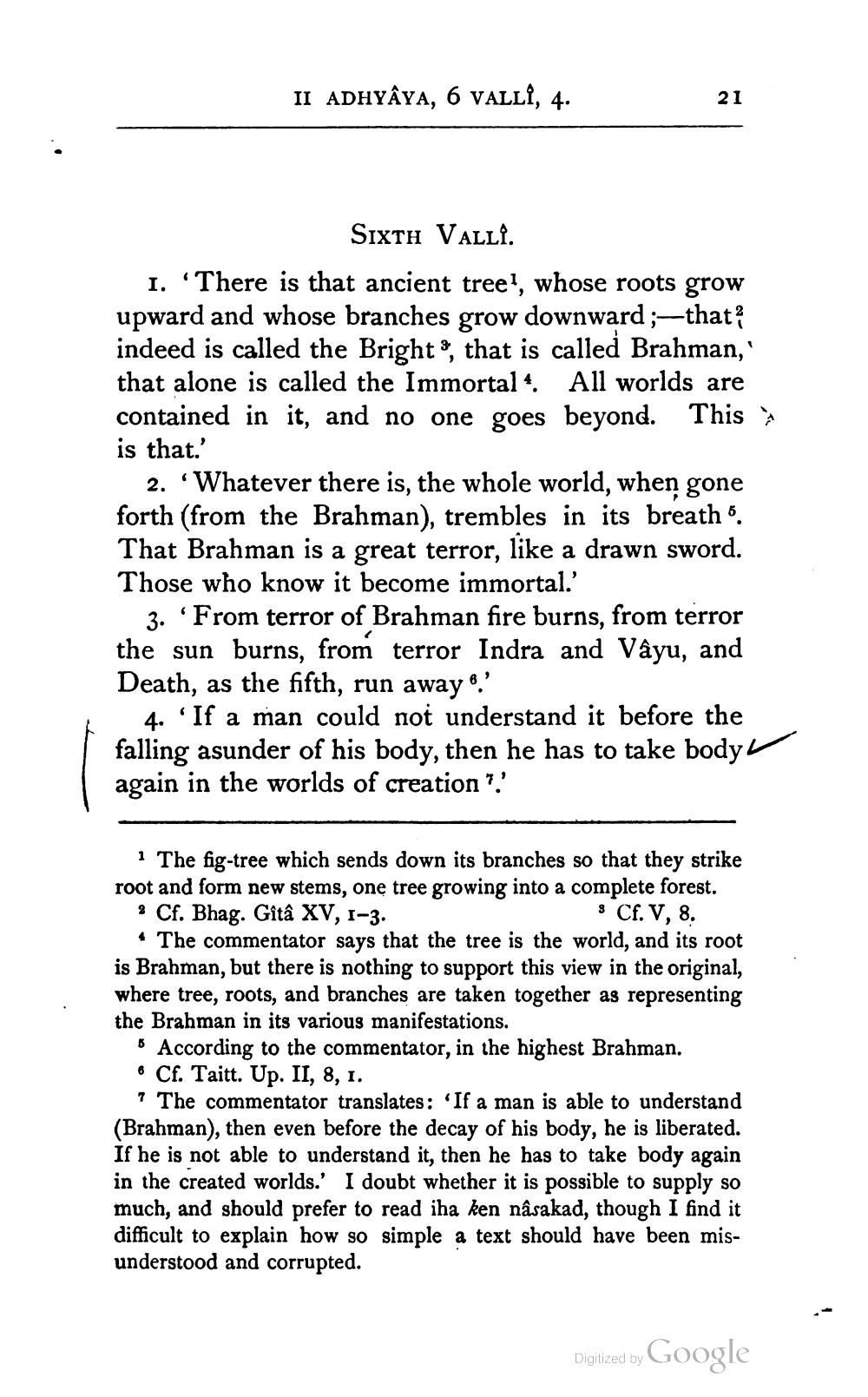________________
II ADHYAYA, 6 VALLI, 4.
21
Sixth Valli. 1. “There is that ancient tree', whose roots grow upward and whose branches grow downward ;—that? indeed is called the Bright", that is called Brahman,' that alone is called the Immortal 4. All worlds are contained in it, and no one goes beyond. This is that.'
2. Whatever there is, the whole world, when gone forth (from the Brahman), trembles in its breath 5. That Brahman is a great terror, like a drawn sword. Those who know it become immortal.'
3. 'From terror of Brahman fire burns, from terror the sun burns, from terror Indra and Vâyu, and Death, as the fifth, run away 8.'
4. 'If a man could not understand it before the falling asunder of his body, then he has to take body again in the worlds of creation?.'
1 The fig-tree which sends down its branches so that they strike root and form new stems, one tree growing into a complete forest. 2 Cf. Bhag. Gîtâ XV, 1-3
8 Cf. V, 8. • The commentator says that the tree is the world, and its root is Brahman, but there is nothing to support this view in the original, where tree, roots, and branches are taken together as representing the Brahman in its various manifestations.
& According to the commentator, in the highest Brahman. 6 Cf. Taitt. Up. II, 8, 1.
7 The commentator translates: 'If a man is able to understand (Brahman), then even before the decay of his body, he is liberated. If he is not able to understand it, then he has to take body again in the created worlds. I doubt whether it is possible to supply so much, and should prefer to read iha ken nâsakad, though I find it difficult to explain how so simple a text should have been misunderstood and corrupted.
Digitized by Google




